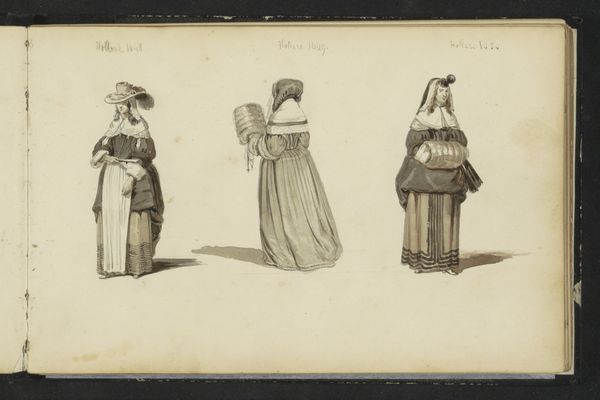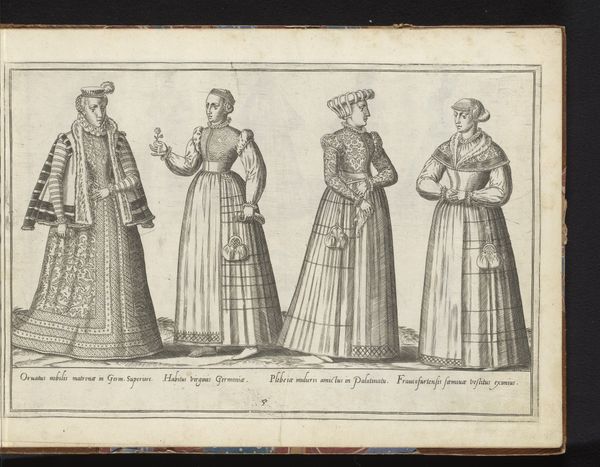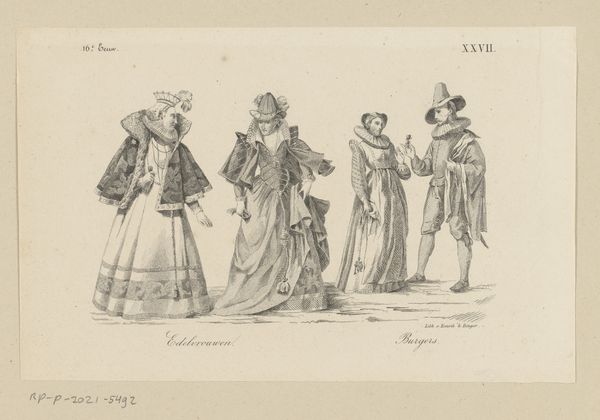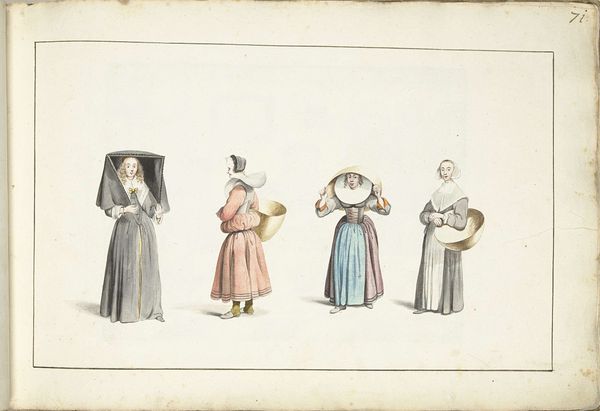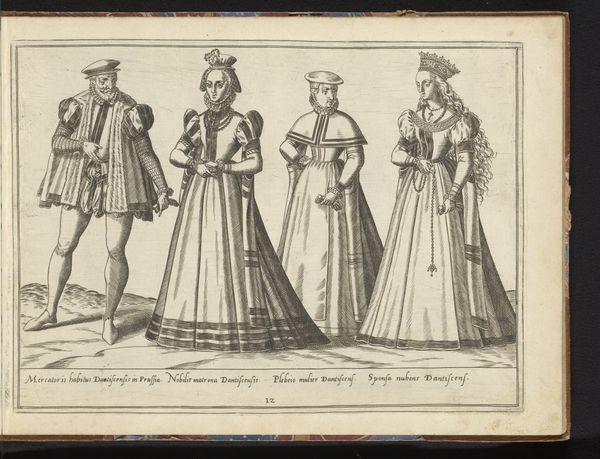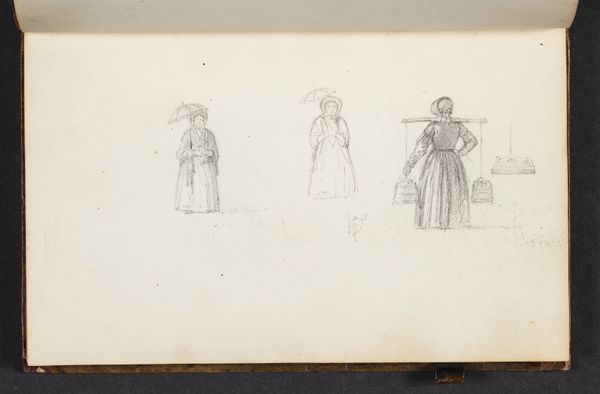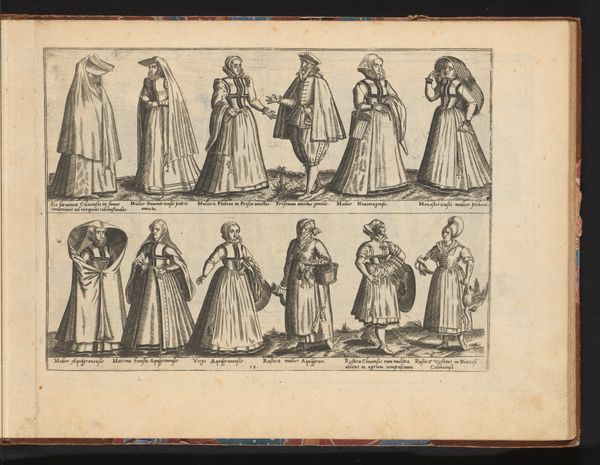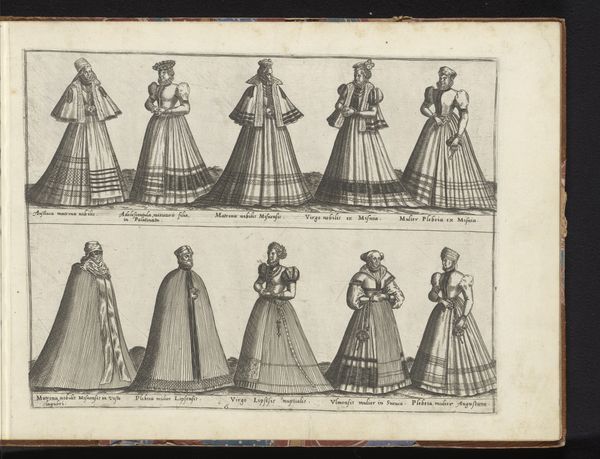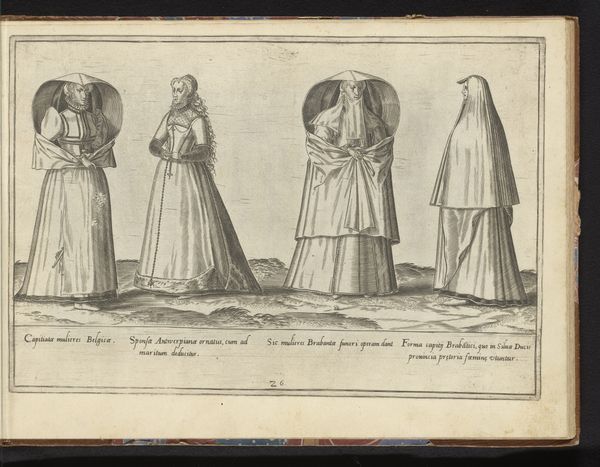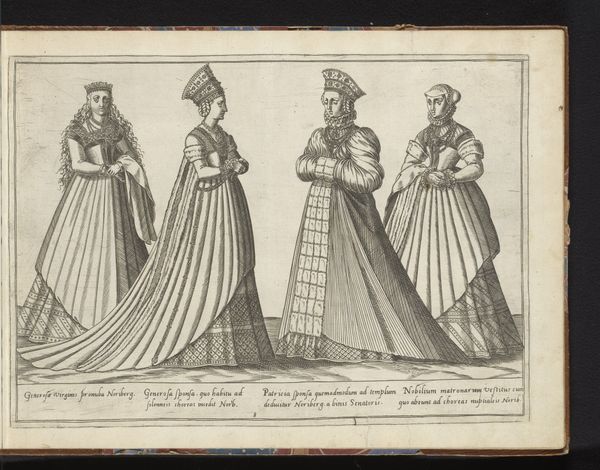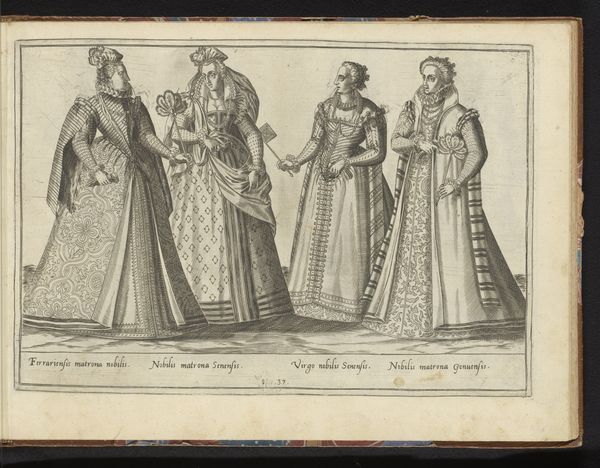
drawing, paper, ink
#
portrait
#
drawing
#
dutch-golden-age
#
paper
#
ink
#
genre-painting
#
academic-art
#
watercolor
Copyright: Rijks Museum: Open Domain
Curator: This subtle drawing by Cornelis Springer is titled "Three Women in Seventeenth-Century Clothing" and dates from between 1846 and 1882. Springer used ink on paper to realize the subtle shades of grey and it’s now part of the Rijksmuseum collection. Editor: My initial impression is that these figures are like ghostly echoes. The sepia tones and delicate lines give them an almost ethereal quality, as if they are memories fading on the page. What is the narrative he attempts to weave by putting all of them side by side in one page? Curator: While on its face, this appears to be a costume study or collection of portraits of aristocratic women, Springer was not simply an observer. These sketches point to the nineteenth-century romanticization of the Dutch Golden Age. The academic style hints at the growing sense of nationalism as countries were trying to define themselves, creating images of themselves, as it were. Editor: Right, the romantic framing comes through the selection of symbols he immortalizes. Consider the headdresses, neck ruffs, the cut of the dresses—these are all meant to signal dignity, respectability, perhaps even power and authority from an idealised past. But he is careful to select very distinctive, individual items, isn't he? The very absence of colour contributes, allowing us to focus solely on the linear form of each character's distinctive pieces. Curator: Precisely, it is through close depiction and accurate detail, even the material textures of the ruffs or gowns that Springers suggests both an admiration of the past, as well as an accuracy of description. His aim was to revive the national memory. Editor: It certainly feels that he tried to construct an imagery with deep resonance. It's not just historical clothing, it is the mood, posture, and subtle suggestion of inner grace. You can almost imagine these ladies stepping out of their time, their elegance frozen and idealized for us. What a fascinating glimpse of the artist’s intent! Curator: It speaks of how history and identity can be carefully molded to serve national consciousness through art. Editor: It highlights the potency of images in our psychological landscape, revealing how clothing as visual symbols have meaning, both cultural and personal.
Comments
No comments
Be the first to comment and join the conversation on the ultimate creative platform.
